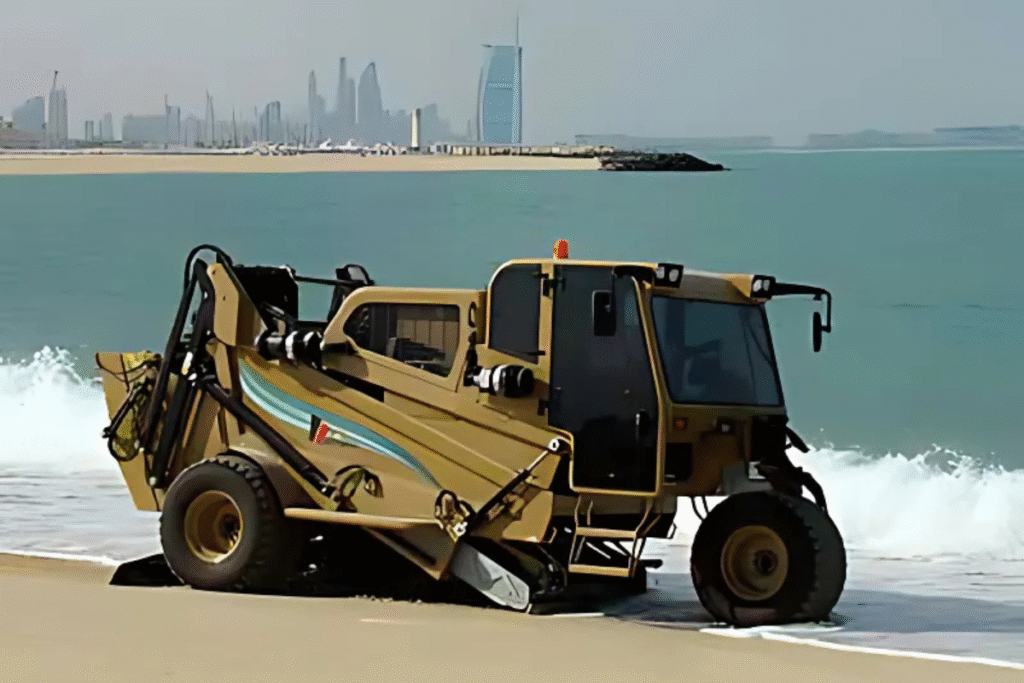Keeping beaches clean is not only about appearance but also about safety, hygiene, and environmental care. Machines designed for this purpose work hard every day, removing debris, shells, and waste from sandy surfaces. To ensure their long life and reliable performance, proper maintenance is essential. When operators follow a regular care routine, sand cleaning equipment remains efficient, reduces downtime, and cuts repair costs.
This guide explains simple yet effective maintenance practices that help extend the lifespan of beach cleaning machines while ensuring smooth operation.
Importance of Regular Maintenance
Beach environments are tough on machines. Constant exposure to sand, salt, and moisture can lead to premature wear and tear. Without proper upkeep, even high-quality sand cleaning equipment can lose efficiency. Regular maintenance ensures:
- Longer machine lifespan
- Reduced breakdowns and costly repairs
- Safer operation for operators
- Consistent cleaning result
Preventive care is always less expensive than emergency repairs, making it an investment in both productivity and cost savings.
Daily Checks Before Operation
Daily inspections are the foundation of good machine care. Operators should:
- Check engine oil and coolant levels.
- Inspect tires or tracks for damage.
- Look for loose nuts, bolts, or fittings.
- Ensure belts and chains are tight and lubricated.
- Remove any sand or debris from moving parts.
By doing these checks, you reduce the risk of sudden machine failure. A few minutes of attention each day can save hours of downtime.
Cleaning After Every Use
Sand is abrasive, and salt accelerates the rusting process. That’s why cleaning after each use is vital. Proper cleaning includes:
- Washing the exterior with fresh water to remove salt and sand buildup.
- Clearing the collection system and screens of debris.
- Drying key components to prevent corrosion.
When operators neglect cleaning, sand buildup can clog filters and moving parts, affecting performance. Consistent washing keeps sand cleaning equipment running smoothly and looking professional.
Lubrication and Moving Parts
Lubrication is one of the simplest yet most effective maintenance steps. Sand creates friction in joints, bearings, and chains, resulting in premature wear. Proper greasing ensures:
- Smooth operation of mechanical parts
- Reduced heat and friction damage
- Longer lifespan of components
It’s best to follow the manufacturer’s lubrication schedule and always use recommended lubricants. Over-lubrication should also be avoided, as it can attract more sand.
Engine and Hydraulic Care
Engines and hydraulic systems power most beach cleaning machines. Neglecting them can lead to major failures. Key points include:
- Changing engine oil and filters at recommended intervals.
- Inspecting hydraulic hoses for leaks or cracks.
- Checking fluid levels regularly.
- Replacing worn-out seals before they fail.
Well-maintained engines and hydraulics ensure that sand cleaning equipment performs at maximum capacity even under heavy workloads.
Storage and Seasonal Care
When not in use, especially during off-seasons, machines must be stored properly. Ideal storage practices include:
- Keeping the machine under cover to avoid direct sunlight and rain.
- Disconnecting the battery to prevent drainage.
- Running the engine occasionally to keep systems active.
- Protecting exposed metal parts with anti-rust coating.
Correct storage protects machines from unnecessary damage and helps them stay ready for the next season.
Scheduled Professional Servicing
Even with regular operator maintenance, professional servicing is essential. Certified technicians can:
- Perform in-depth inspections.
- Calibrate sensitive components.
- Replace worn parts before they fail.
- Update operators on new maintenance practices.
Partnering with reliable service providers ensures sand cleaning equipment remains in excellent working order, reducing downtime and maximizing productivity.
Training for Operators

Well-maintained machines also depend on trained operators. Staff should know:
- How to perform daily checks.
- Proper cleaning and lubrication steps.
- Safe operation practices.
- Signs of early wear or malfunction.
With the proper knowledge, operators can prevent minor issues from becoming costly repairs, ensuring consistent machine efficiency.
Conclusion
Beach cleaning machines are vital tools for keeping public spaces safe, clean, and enjoyable. Like any heavy-duty machinery, their efficiency depends on proper care and timely servicing. From daily checks and cleaning to professional inspections and seasonal storage, every step contributes to longer machine life and safer operations.
If you are looking for reliable sand cleaning equipment and expert servicing, Kanoo Machinery is your trusted partner in the region. With a strong reputation for quality and unmatched after-sales support, we ensure your machines stay in top condition for years. Get in touch with our team at 800- KM100(56100).






















